Ash Fallout Zones from Previous Yellowstone Eruptions Predict a Possible Future
The Yellowstone super-volcano is located in Yellowstone National Park and covers parts of the states of Wyoming, Idaho, and Montana. The U.S. Congress and President Ulysses S. Grant established the national park in 1872.
Track of the Caldera Over Millions of Years
But caldera of the super-volcano wasn't always where it is today. The hotspot called the Snake River Hotspot that feeds the caldera has tracked across the state of Idaho over millions of years due to plate tectonics.
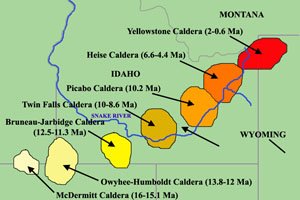
Image Source
Today when we think of Yellowstone National Park we think of geysers and colorful pools of hot water (Image Sources).
The Dark Side of Yellowstone
But Yellowstone has a dark side that it shows approximately every 630,000 years. The dark side of Yellowstone is a super-volcano eruption that covers much of the United States in volcanic ash.
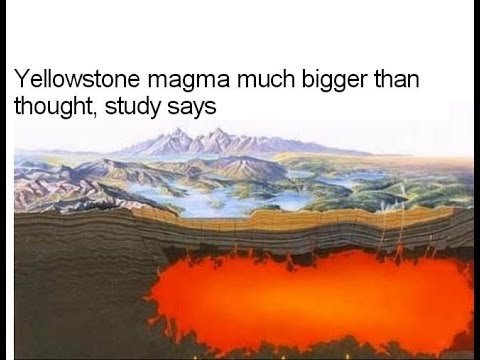
Image Source
The current caldera under Yellowstone has been studied and found to be much larger than scientists previously thought.
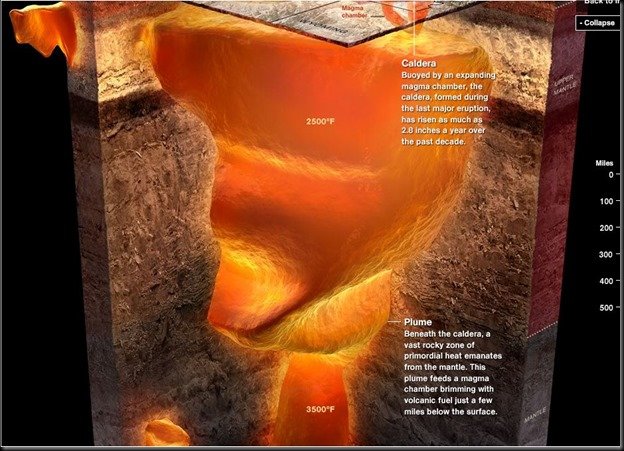
Image Source
Ash from Last Three Eruptions

Image Source
Geologists have deduced three separate eruption events from the super-volcano; Huckleberry Ridge eruption 2.1 million years ago, Mesa Falls eruption 1.3 million years ago, and the Lava Creek eruption 630,000 years ago. These eruptions covered much of the western and central United States in ash. The ash track from the Mount St. Helens eruption in 1980 is shown for comparison.
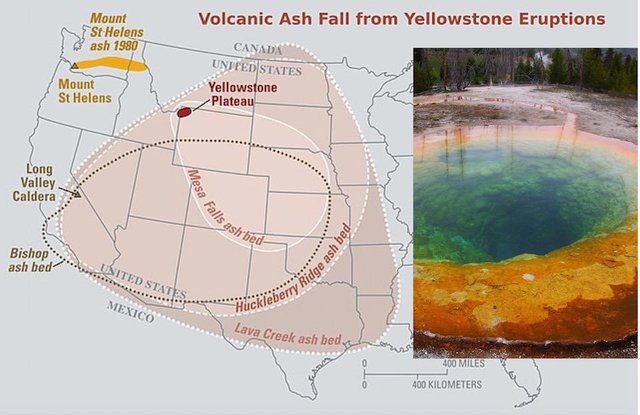
Image Source
By studying ash deposits around the region, like the Mesa Falls Tuff deposit shown below, geologists estimate that the maximum thickness of the ash reached up to 660 feet. That is enough to cover many of our modern skyscrapers.
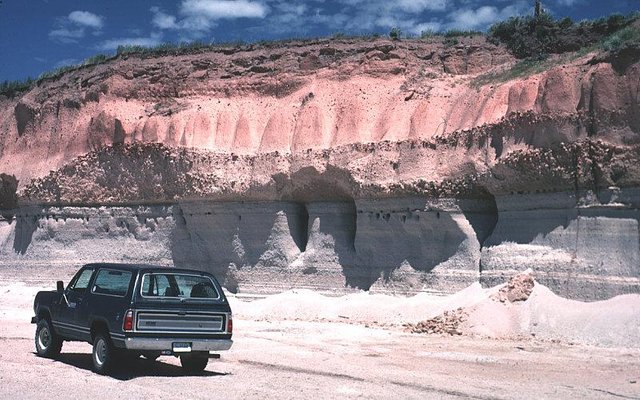
Image Source
Scientists estimate that the Lava Creek eruption coated North America with 330 cubic kilometers of ash. Using an Ash3d simulation program researchers applied current global wind patterns to predict the ash distribution across North America from a similar sized eruption.
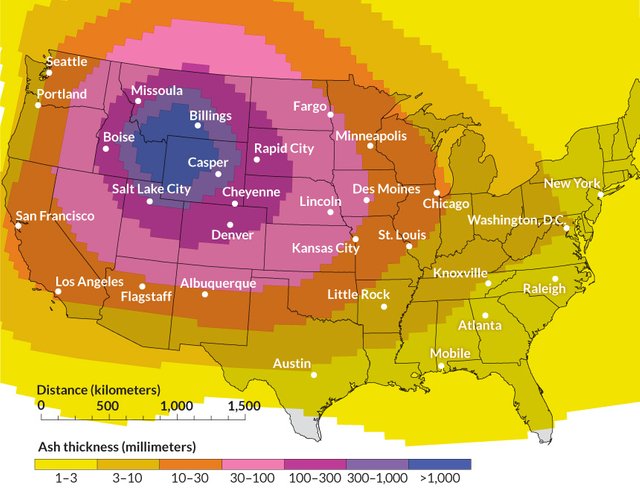
Image Source
Volcanic Winters from Ash Clouds
Geologists at U.C. Santa Barbara studied the volcanic winters induced by the super-volcano eruptions which temporarily blocked out sunlight and cooled the planet. The study was conducted by measuring isotopes in foraminifera shells.
Foraminifera are tiny photosynthetic organisms in the ocean. Foraminifera absorb different ratios of isotopes incorporation into their carbonate shells depending on the temperature of the surrounding ocean water. By precisely measuring the ratio of isotopes the geologists deduced that the eruptions dropped the ocean temperatures by approximately 3 degrees Celsius.
The Past Could Give Us a Glimpse of the Future
It is safe to say the Yellowstone caldera will erupt one day, but the exact timing of such an event is still unknown. Probabalistically, there is a small probability of an eruption yet the impact of such an event will have very large consequences for those in North America and around the globe.
Sources and Full Articles
Yellowstone Volcano's Twin Super Eruptions: The Caldera That Altered Global Climate, Forbes, 26 October 2017
Yellowstone, Photovolcanica
America’s Extinction Level Event Could Be Yellowstone- Breaking News, Before It's News, 18 April 2016
Magma Expanse Under Yellowstone Supervolcano More Vast Than Thought (Video), Before It's News, 24 April 2015
Supervolcano blast would blanket U.S. in ash, Science News, 22 September 2014
Thank You!
Thank you!
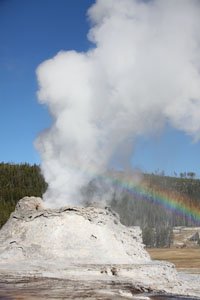
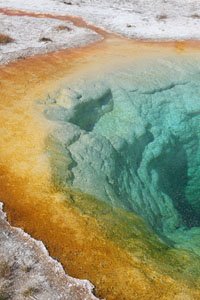
Great post.
nice post.looking forwrd for more science posts
It is a very strange discovery that will bust the many myths associated.
Nice post. I recently read an article where university students determined that the magma on past eruptions didn't take as long as expected to build up, so it could only be a few decades buildup prior to eruption rather than a few hundred years as previously expected. Pretty interesting stuff
I read about that too.
I have not visited Yellowstone yet, but when you are walking around Yellowstone you have to remember you are walking on top of a super-volcano. I hope I have a chance to visit there before it erupts.
Have a great weekend!
Steem on,
Mike
Really like your post keep it up!
I hear volcanic ash makes great fertilizer so I guess I won't have to worry about fertilizing my lawn when she blows :)
Depending on where your lawn is, you may not have to worry about your lawn for a while.
Once the ash settles, that is one thing, but if it rains, the rains will cause ash-water streams that will clog and burst.
Yes, the ash is good for renewal of life after a devastating period of time. It is just a matter of getting through that devastating period of time.
Have a great weekend!
Steem on,
Mike
hot
Nice images